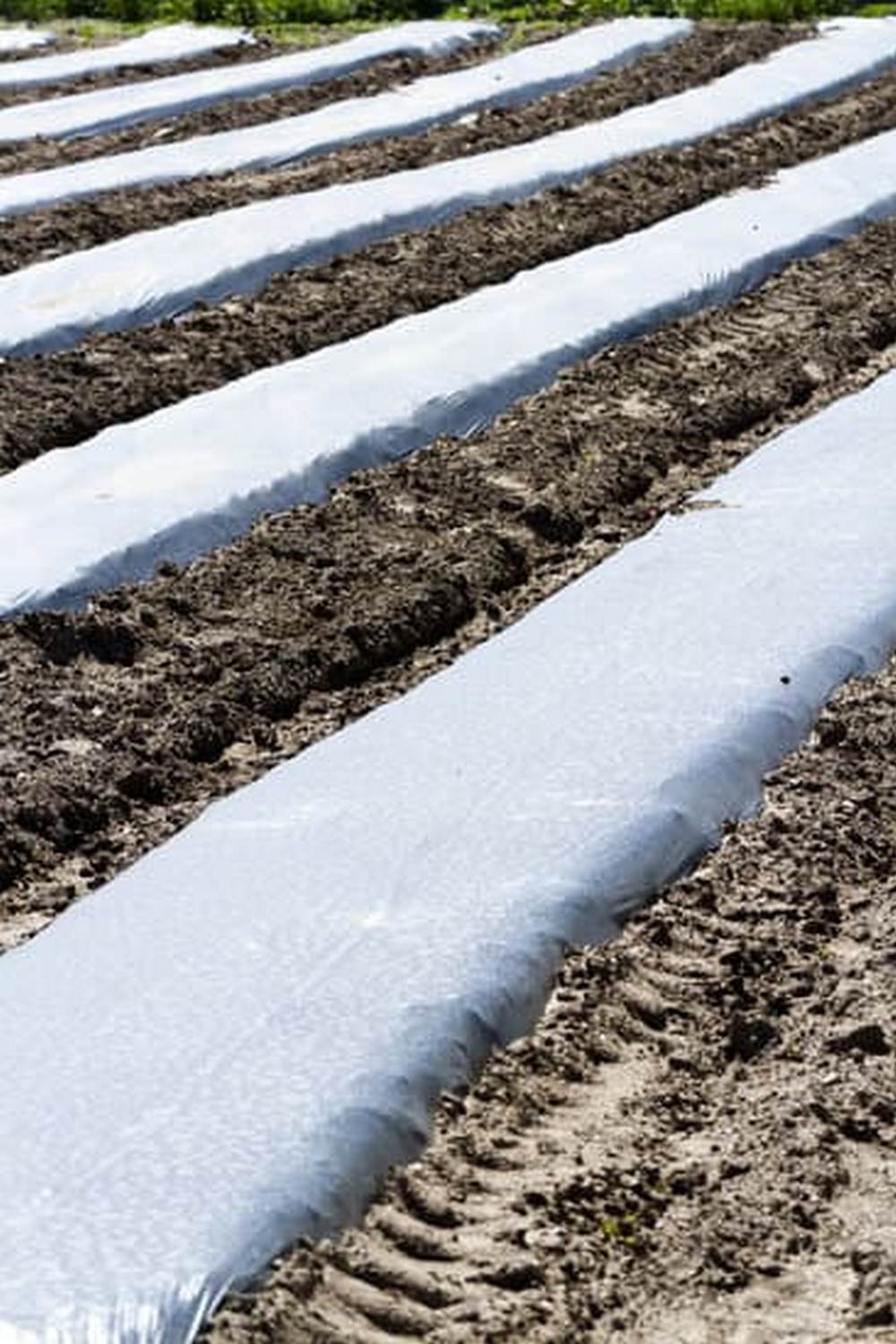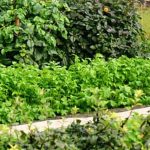Small container vegetable gardening ideas offer a practical solution for individuals with limited outdoor space or those looking to add greenery to their living areas. This innovative approach allows gardeners to cultivate their favorite vegetables in small containers, providing a convenient and versatile option for urban dwellers, apartment residents, or anyone seeking a manageable gardening project.
By exploring the benefits, tips, and best practices of small container vegetable gardening, individuals can transform even the smallest spaces into vibrant and fruitful gardens.
One of the key advantages of small container vegetable gardening is the ability to grow fresh produce without requiring a large outdoor garden plot. With the right containers and techniques, gardeners can nurture thriving plants on balconies, patios, windowsills, or any other compact area.
This sustainable practice not only promotes self-sufficiency but also enhances the overall aesthetics of indoor and outdoor living spaces. By incorporating small container vegetable gardening ideas into daily routines, individuals can enjoy a rewarding hobby while reaping the nutritional benefits of homegrown produce.
When embarking on small container vegetable gardening endeavors, selecting the appropriate containers is crucial for successful plant growth. Factors such as size, material, drainage capabilities, and mobility should be considered when choosing containers that will accommodate a variety of vegetables.
Additionally, equipping oneself with essential tools and supplies tailored to small-space gardening can optimize efficiency and productivity throughout the growing season. By understanding these fundamental principles, aspiring gardeners can cultivate flourishing crops in limited spaces while embracing the beauty of sustainable food cultivation.
Benefits of Growing Vegetables in Small Containers
Growing vegetables in small containers offer numerous benefits that make it an attractive option for individuals with limited space or time. Here are some key advantages of small container vegetable gardening:
- Space Efficiency: Small container vegetable gardening allows you to maximize the use of limited space, making it ideal for urban dwellers or those with small yards or balconies.
- Portability: Containers can be easily moved around, which is especially useful for rearranging your garden to optimize sunlight exposure or bringing plants indoors during inclement weather.
- Weed and Pest Control: Container gardening can help minimize weed growth and control pests more effectively compared to traditional ground planting, leading to healthier plants.
In addition to these benefits, small container vegetable gardening ideas also provide a great opportunity for beginners to start their own garden without feeling overwhelmed. The compact nature of container gardening makes it easier to manage and maintain, ensuring a higher chance of success even for those new to growing vegetables.
Moreover, small container vegetable gardening allows for better control over soil quality and drainage, resulting in healthier plants. By using high-quality potting mix and properly sized containers with adequate drainage holes, you can create an optimal environment for your vegetables to thrive. With the right care and attention, you can enjoy a bountiful harvest of fresh produce right at your fingertips all season long.
Choosing the Right Containers for Small-Space Gardening
When it comes to small container vegetable gardening ideas, choosing the right containers is crucial for the success of your mini garden. Here are some options to consider when selecting containers for your small-space gardening:
- Plastic Pots: Lightweight and inexpensive, plastic pots are a popular choice for small container vegetable gardening. They come in a variety of sizes and colors, making them versatile for different types of vegetables.
- Terracotta Pots: These classic clay pots provide good insulation for plant roots, helping to regulate soil temperature. They are sturdy but can be heavy, so consider this when moving them around your space.
- Fabric Grow Bags: Breathable and lightweight, fabric grow bags are a great option for small container vegetable gardening. They prevent root circling and allow for better aeration of the soil.
In addition to the type of containers, consider the size as well. Make sure the containers you choose have enough room for the roots to grow and that they provide proper drainage to avoid waterlogged soil.
When setting up your small container vegetable garden, think about the space you have available and how many containers you can fit comfortably. Consider vertical gardening options like stacking pots or using hanging baskets to maximize space efficiency in your small garden area.
It’s also important to consider the aesthetics of your containers. Choosing visually appealing pots that complement each other can enhance the overall look of your small container vegetable garden. Don’t be afraid to get creative with different shapes, colors, and textures to make your garden area more inspiring and enjoyable to work in.
Essential Tools and Supplies for Small Container Vegetable Gardening
When embarking on small container vegetable gardening, having the right tools and supplies is essential for success. One of the most important items you will need is a good quality potting mix that provides the necessary nutrients and drainage for your vegetables to thrive. Look for a mix specifically formulated for container gardening to ensure your plants receive the proper support.
In addition to potting mix, you will need a variety of containers suitable for the vegetables you plan to grow. Choose containers that are large enough to accommodate the root systems of your plants and have adequate drainage holes to prevent waterlogged soil. Additionally, consider using self-watering containers or adding saucers beneath your pots to help maintain consistent moisture levels.
Other essential tools for small container vegetable gardening include a watering can or hose with a gentle spray attachment, hand trowel or shovel for planting and transplanting, pruning shears for maintaining healthy plants, and plant markers to keep track of what you have planted in each container. Having these basic supplies on hand will make it easier to care for your vegetable garden and ensure optimal growth throughout the season.
As you gather your tools and supplies for small container vegetable gardening, remember that investing in high-quality items upfront can save you time and effort in the long run. Whether you are a beginner or experienced gardener, having the right equipment at your disposal will set you up for success in creating a bountiful harvest from your small space garden.
Top Tips for Success in Small Container Vegetable Gardening
Small container vegetable gardening is a fantastic way to enjoy fresh produce even in limited spaces. To ensure success in your small container vegetable garden, consider these top tips for maximizing your harvest and creating a thriving mini-garden oasis.
Choose the Right Location
For successful small container vegetable gardening, location is key. Make sure your containers receive at least 6-8 hours of sunlight per day to support healthy plant growth. Consider placing your containers on a deck, balcony, or windowsill where they can get adequate sunlight.
Proper Watering and Drainage
Proper watering is essential for the health of your container vegetables. Ensure that your containers have drainage holes to prevent waterlogging, which can lead to root rot. Water consistently, keeping the soil moist but not overly saturated. Consider using a drip irrigation system or self-watering containers for easier maintenance.
Regular Feeding and Fertilizing
Container plants require regular feeding to thrive since nutrients in the soil are quickly depleted in confined spaces. Use a balanced organic fertilizer to feed your vegetable plants every few weeks during the growing season. Additionally, consider adding compost or organic matter to enrich the soil and promote healthy growth.
By following these top tips for success in small container vegetable gardening, you can create a productive and beautiful garden space even with limited room to spare. With careful planning and care, you can enjoy fresh produce right at your fingertips throughout the growing season.
Best Vegetables to Grow in Small Containers
When it comes to small container vegetable gardening ideas, choosing the right vegetables to grow is crucial for success. Not all vegetables thrive in limited space, so it’s essential to select varieties that are well-suited for container gardening. Some of the best vegetables to grow in small containers include tomatoes, peppers, herbs, salad greens, and radishes.
Tomatoes
Tomatoes are a popular choice for small container gardening because they can be easily grown in pots or hanging baskets. Look for compact or dwarf varieties such as cherry tomatoes or determinate types that don’t require staking. Make sure to provide adequate support for your tomato plants as they grow and consider using a trellis or cage to keep them upright.
Peppers
Peppers are another great option for small container vegetable gardening. Choose varieties like bell peppers or mini sweet peppers that are well-suited for growing in pots. Peppers enjoy warm weather and plenty of sunlight, so make sure to place your containers in a sunny spot on your patio or balcony. Keep the soil consistently moist but not waterlogged to ensure healthy pepper plants.
Herbs
Herbs are perfect for small container gardening as they don’t require much space and can be grown indoors or outdoors. Popular herbs like basil, parsley, mint, and chives do well in containers and can be easily harvested for fresh seasoning in your cooking. Consider planting a variety of herbs together in a larger container for a beautiful and functional herb garden display.
By choosing the right vegetables like tomatoes, peppers, and herbs for your small container garden, you’ll be able to enjoy fresh produce from your own homegrown harvest. Experiment with different varieties and get creative with how you arrange your containers to maximize space efficiency and visual appeal in your small space garden. With proper care and attention, you can cultivate a bountiful vegetable harvest even in the smallest of spaces.
Creative Ways to Arrange Containers for Maximum Space Efficiency
When it comes to small container vegetable gardening ideas, arranging your containers strategically can make a big difference in maximizing the space you have available. One effective technique is vertical gardening, where you stack containers on shelves or hang them from a wall-mounted structure.
This not only saves space but also allows for better sunlight exposure for your plants. Another creative way to arrange containers is by using tiered plant stands or ladder-like structures to create multiple levels of planting areas.
Additionally, grouping containers based on the vegetables’ needs can also help make the most of your space. For example, placing containers with similar sun and water requirements together can make it easier for you to provide adequate care for each group of plants. You can also opt for modular stacking systems that allow you to customize the layout of your small container garden as needed.
One more innovative way to arrange containers for maximum space efficiency is by incorporating hanging planters or window boxes. These types of containers are perfect for trailing or vining plants like tomatoes, cucumbers, or beans. By utilizing vertical space with hanging planters, you can free up valuable ground space while still growing a variety of vegetables in your small container garden.
| Vegetable | Sunlight Needs |
|---|---|
| Tomatoes | Full sun |
| Lettuce | Partial shade |
| Peppers | Full sun |
Common Mistakes to Avoid in Small Container Vegetable Gardening
When embarking on small container vegetable gardening, there are several common mistakes that gardeners should avoid to ensure a successful harvest. One of the most crucial mistakes to steer clear of is using containers that are too small for the vegetables you plan to grow.
Insufficient space can restrict root growth, leading to stunted plants and poor yields. It is essential to select appropriately sized containers that allow enough room for the roots to develop and support the plant’s growth.
Another mistake to watch out for is inadequate drainage in your containers. Without proper drainage holes at the bottom of your pots, excess water can accumulate and cause root rot or waterlogging, ultimately harming your plants. To prevent this issue, ensure that your containers have sufficient drainage holes and use well-draining soil mixtures specifically formulated for container gardening.
Overcrowding is another common error in small container vegetable gardening. While it may be tempting to maximize space by planting many seeds or seedlings in one pot, overcrowding can lead to competition for nutrients, sunlight, and water among plants. This can result in smaller yields and increased susceptibility to pests and diseases.
It is important to follow proper spacing guidelines for each type of vegetable you are growing in order to promote healthy growth and optimize productivity. By avoiding these common mistakes, you can set yourself up for a successful small container vegetable garden full of thriving, bountiful plants.
In addition, neglecting regular maintenance tasks such as watering, fertilizing, and pest control can hinder the success of your small container vegetable garden. Insufficient watering can lead to stressed plants or wilting, while over-fertilizing can cause nutrient imbalances that affect plant health. It is important to establish a consistent schedule for watering and feeding your plants based on their specific needs.
Additionally, regularly inspecting your plants for signs of pests or diseases allows you to address any issues promptly before they escalate. By staying vigilant with maintenance tasks and addressing problems early on, you can help ensure a flourishing small container vegetable garden with abundant harvests throughout the growing season.
Harvesting and Maintaining Vegetables in Small Containers
Maintaining and harvesting vegetables in small containers can be a rewarding experience, especially when you see your efforts come to fruition. To ensure a successful harvest, it is essential to regularly inspect your plants for pests, diseases, and signs of stress. Make sure to water your container garden as needed, ensuring that the soil stays moist but not waterlogged. Some small container vegetable gardening ideas include using self-watering containers or adding mulch to help retain moisture.
When it comes time to harvest your vegetables, be sure to do so at the peak of ripeness for the best flavor and nutritional value. Different vegetables have different harvesting requirements, so be sure to research each plant in your small container garden. For example, leafy greens like lettuce can be harvested by cutting outer leaves as needed, while root vegetables like carrots should be gently pulled from the soil.
Proper maintenance also includes fertilizing your plants throughout the growing season. Choose a balanced fertilizer or opt for organic options to keep your plants healthy and productive. Regular pruning of dead or diseased foliage will also promote new growth and prevent the spread of diseases in your small container vegetable garden.
| Vegetable | Harvesting Time |
|---|---|
| Lettuce | When outer leaves are large enough |
| Tomatoes | When fruit is firm and fully colored |
| Zucchini | When fruits are 6-8 inches long |
Inspiration
Small container vegetable gardening is not only practical but also aesthetically pleasing. As showcased in various stunning small container vegetable gardens, the possibilities for creativity and beauty are endless. Whether it’s a balcony overflowing with vibrant tomatoes and peppers or a windowsill adorned with herbs and lettuce, these mini-gardens prove that limited space does not mean limited potential.
From hanging baskets to vertical planters, the innovative use of containers in these small gardens demonstrates how even the smallest nooks and crannies can be transformed into thriving green spaces. The visual appeal of these gardens adds charm to any urban setting while providing a sustainable source of fresh produce right at your fingertips.
In conclusion, the showcase of stunning small container vegetable gardens serves as an inspiration for aspiring gardeners looking to make the most out of their limited space. With a dash of creativity, a sprinkle of care, and a pinch of patience, anyone can enjoy the rewards of cultivating their own mini oasis. So go ahead, unleash your inner gardener and embark on your small container vegetable gardening journey today.
Frequently Asked Questions
What Vegetables Do Well in Small Pots?
Some vegetables that do well in small pots include cherry tomatoes, lettuce, radishes, and peppers. These plants don’t require a lot of space for their roots to thrive and can be easily grown on balconies or windowsills.
What Vegetables Grow Well Together in a Container?
When planting vegetables together in a container, consider companion planting. For example, tomatoes and basil make a good pair because basil can help repel pests that commonly affect tomatoes. Carrots and peas also grow well together since peas provide support for the carrots as they grow.
How Do You Layout a Small Vegetable Garden?
To layout a small vegetable garden, first identify a sunny spot with access to water. Consider using raised beds or containers to maximize space and improve drainage.
Plan your layout by grouping vegetables with similar light and water requirements together, making it easier to care for them efficiently. Remember to leave enough space between plants for proper air circulation and growth.

If you’re looking to get into vegetable gardening, or are just looking for some tips on how to make your current garden better, then you’ve come to the right place! My name is Ethel and I have been gardening for years. In this blog, I’m going to share with you some of my best tips on how to create a successful vegetable garden.





